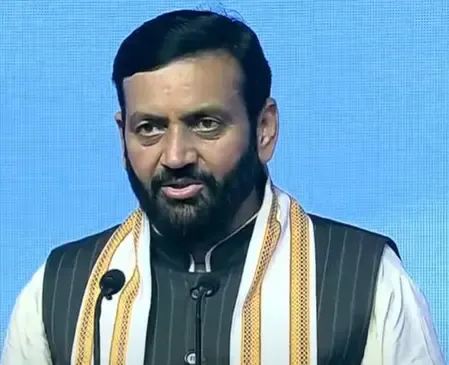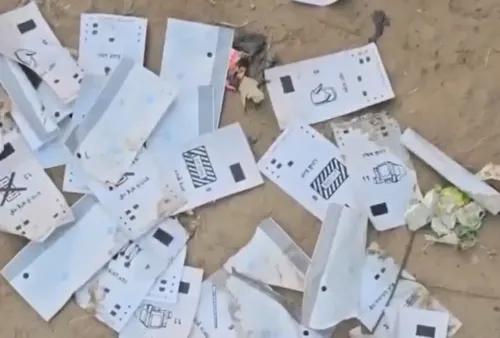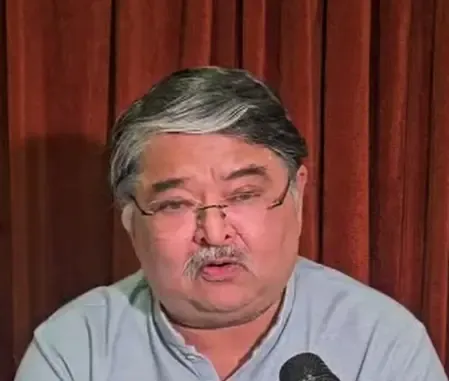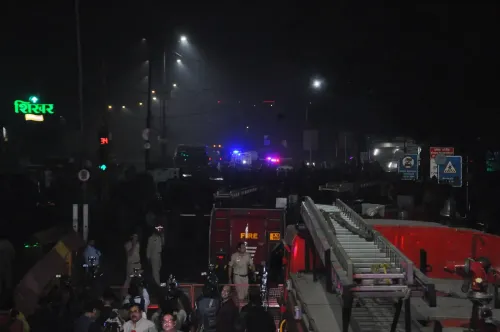Will Delhi's Drinking Water Be Affected If Punjab Supplies Less?

Synopsis
Key Takeaways
- Haryana's water supply is crucial for Delhi's drinking water.
- Punjab's current allocation to Haryana is significantly less than required.
- Political tensions complicate water management.
- Effective dialogue is needed to resolve the conflict.
- Long-term solutions must focus on sustainable water resource management.
Chandigarh, April 30 (NationPress) In the midst of a rising water conflict, Haryana Chief Minister Nayab Singh Saini expressed astonishment at the claims made by his Punjab counterpart, Bhagwant Mann. He cautioned that if water supply to Haryana decreases, it will have repercussions for drinking water in the national capital.
Currently, Punjab limits the allocation of Bhakra water to Haryana at 4,000 cusecs, in contrast to the 8,500 cusecs determined by the technical committee of the Bhakra Beas Management Board (BBMB).
CM Saini emphasized that the current debate extends beyond the Sutlej-Yamuna Link (SYL) canal water; it fundamentally concerns drinking water accessibility. “Annually, in April, May, and June, the BBMB supplies 9,000 cusecs of water to Haryana,” he noted.
Refuting CM Mann's assertion that Haryana had exhausted its drinking water quota in March, CM Saini stated that Haryana has only received 4,000 cusecs of drinking water over the past week, which is approximately 60 percent of its total requirement.
“When the Aam Aadmi Party was in power in Delhi, the Mann administration in Punjab had no objections to water flowing into the capital. Now that the AAP is no longer in power, why is Mann Sahib making statements that could harm the people of Delhi?” CM Saini questioned.
The BBMB's technical team, comprising chief engineers from all involved states, reached a consensus on April 23 to allocate 8,500 cusecs of water to Haryana for seven days. “Punjab officials are hesitating to execute this decision, which aims to ensure water is distributed among Punjab, Haryana, Delhi, and Rajasthan,” CM Saini appealed, urging an end to party politics and advocating for the provision of drinking water to Haryana.
Meanwhile, Punjab CM Mann accused the BJP of playing a “dirty game” to secure more water for Haryana. He called on the Union government to redirect waters from the Chenab, Jhelum, Ujh, and other rivers to northern states as the paddy season approaches, advocating for the suspension of the Indus Water Treaty with Pakistan.
CM Mann claimed that Haryana has consumed 103 percent of its allotted water and that the BJP is exerting pressure on Punjab to release additional water to Haryana.
Countering Punjab's claims, CM Saini remarked, “Bhagwant Mann seems to conveniently overlook the fact that Haryana consistently received no less than 9,000 cusecs of water at the contact point during April, May, and June in 2022, 2023, and 2024.”
He clarified that the water released by the BBMB includes allocations for Delhi's drinking water, as well as supplies for Rajasthan and Punjab itself, meaning Haryana's effective water supply is only 6,800 cusecs.
CM Saini pointed out that Mann's comments regarding low water levels in the Pong and Ranjit Sagar dams ignore the status of the Bhakra Dam, which is the source of Haryana's water, not Pong or Ranjit Sagar.
In response to Punjab's claim that Haryana had depleted its water allocation in March, CM Saini noted, “we have not received our full share. If BBMB were to meet Haryana’s demand, it would equate to just 0.0001 percent of the water held in the Bhakra Dam, a figure so minuscule it would have no effect on its storage.”
He stressed the importance of emptying water reservoirs before June to prepare for monsoon rainwater storage. “Failing to clear the reservoir in time risks excess water flowing to Pakistan via Harike-Pattan, a scenario that is unfavorable for both Punjab and the nation,” he concluded.









